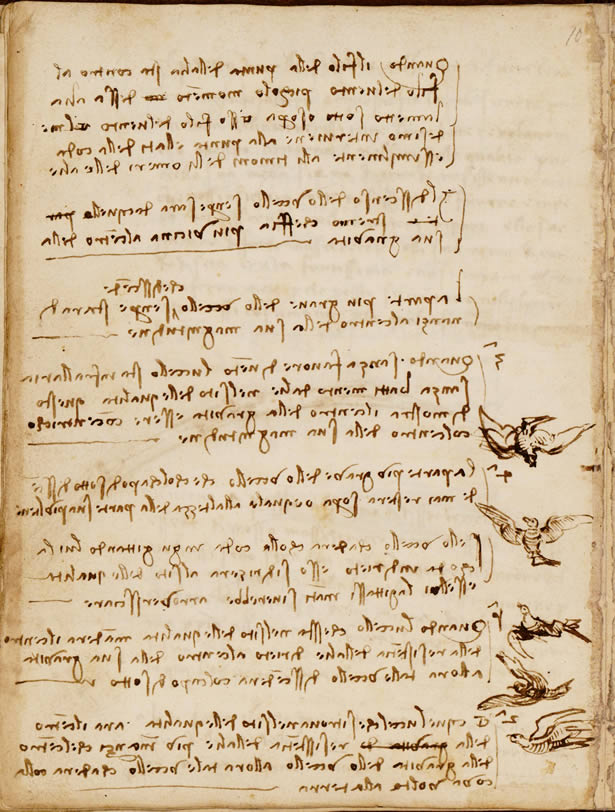Fol. 7v
«Quando senza favore di vento l'uccello sta in aria in equilibrio senza battimento d'ali, questo dimostra che il centro della sua gravità coincide con il centro della sua grandezza.
La parte più pesante dell'uccello che con il capo al di sotto discende non resterà mai al di sopra o ad uguale altezza della parte più leggera.
Se l'uccello cadrà con la coda in giù, spostando la coda indietro si drizzerà in posizione di equilibrio, se la spostasse in avanti si rovescerebbe.
Se l'uccello che si trova in equilibrio sposterà il centro della resistenza delle ali indietro rispetto al centro della sua gravità, scenderà con il capo in basso.
E se l'uccello che si trova in equilibrio sposterà il centro della resistenza delle ali più avanti del centro di gravità, cadrà con la coda verso terra»
(When, without the support of the wind, the bird remains in the air in equilibrium without flapping its wings, this shows that its centre of gravity coincides with the centre of its size.
The heavier part of the bird, descending with its head down, never remains at a level that is above or equal to the height of the lighter part.
If the bird falls with its tail down, by moving the tail back it straightens up to a position of equilibrium; if it were to move it forward it would flip over.
If the bird in a position of equilibrium moves the centre of resistance of its wings behind with respect to its centre of gravity, it will descend with its head down.
And if the bird in a position of equilibrium moves the centre of resistance of its wings forward of its centre of gravity, it will fall with its tail facing towards earth.)
NOTE. For each page of Leonardo’s Codex we provide a brief summary, with the quotation of one that page’s most significant passages edited in modern Italian, with an English translation.
translation by Kim Williams

